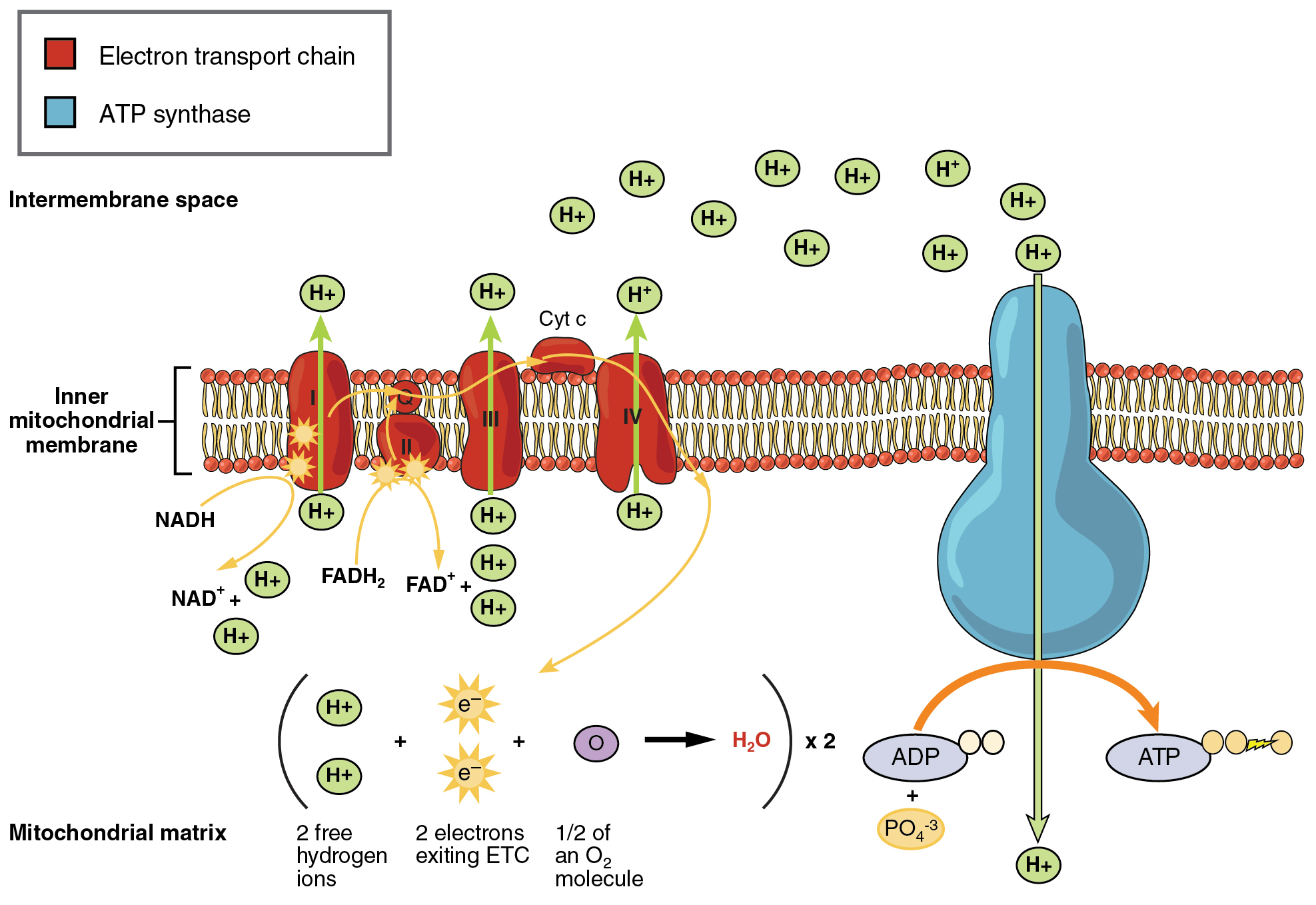
 Oxidative phosphorylation is a metabolic pathway that uses energy released by the oxidation of nutrients to produce adenosine triphosphate (ATP). It is the final stage of cellular respiration, following glycolysis and the citric acid cycle (also known as the Krebs cycle or TCA cycle), and it takes place in the mitochondria of eukaryotic cells.
Oxidative phosphorylation is a metabolic pathway that uses energy released by the oxidation of nutrients to produce adenosine triphosphate (ATP). It is the final stage of cellular respiration, following glycolysis and the citric acid cycle (also known as the Krebs cycle or TCA cycle), and it takes place in the mitochondria of eukaryotic cells.
Here’s a simplified description of the process:
1. **Electron Transport Chain (ETC):** The high-energy electrons derived from NADH and FADH2, which are produced during glycolysis and the citric acid cycle, are transferred to a series of protein complexes in the inner mitochondrial membrane. This series of complexes is known as the electron transport chain. As electrons move down the chain, their energy is used to pump protons (H+ ions) from the mitochondrial matrix into the intermembrane space, creating a proton gradient across the inner mitochondrial membrane.
2. **Chemiosmosis:** The proton gradient created by the electron transport chain generates a force known as a proton-motive force. This force drives protons back across the membrane, down their concentration gradient, through a protein complex called ATP synthase.
3. **ATP Synthesis:** As protons flow through ATP synthase, the energy released is used to add a phosphate group to adenosine diphosphate (ADP), creating ATP. This process is known as phosphorylation.
4. **Water Formation:** The electrons at the end of the electron transport chain are taken up by oxygen, which also picks up protons to form water. This is why oxygen is essential for cellular respiration; it acts as the final electron acceptor at the end of the electron transport chain.
The oxidative phosphorylation process is highly efficient and produces a large amount of ATP, making it a vital process for energy production in most eukaryotic cells. However, it’s worth noting that it also produces reactive oxygen species as a byproduct, which can cause cellular damage if not properly managed.
© Gnomeprints 2021
Design by ThemeShift.